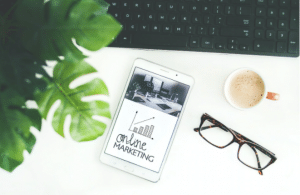Why Sustainability Apps Are So Popular

Even if you don’t run a business, you’ll know just how important apps are. We use them for everything from financial management to relaxation and downtime, and they are genuinely a convenience many couldn’t live without. When you are a business owner, these apps take on an even greater significance; they can improve your business and make it much more efficient.
For some business owners, the apps they choose should be all about sustainability, and there are a number of different apps to choose from and download to your phone or tablet. But what is it about these sustainability apps that are so popular, and why should you start to use them in your business? Read on to find out the answer and plenty more information.
Improved Brand Image
Being sustainable is something we should all attempt to include much more in our lives and, when you have a business to run, in your business too. Using apps that focus on this issue can help you, and one of the reasons you might want to go down this route and download one or more of these apps is that they will help you improve your brand image.
There is a lot of competition in business, no matter what sector you happen to work in. This means that anything you can do to stand out and ensure your brand image is better than your competitors is crucial. In this way, you will be noticed first, and in many cases, this can be the difference between making a sale and finding a new customer or not. When you use sustainability apps – or even when you create one yourself since digital project management has made this possible – you can prove to your customers that you are different and make a difference. With an improved brand image, you can gain many more customers.
Meet Consumer Demand
Have you ever heard the saying ‘the customer is king’? This is a mantra to live by in business, and although you can’t – or shouldn’t – go overboard when helping your customers and making changes that will make them happy, there are some things that are easy to do and that will improve your profits.
One of these things is using sustainability apps. The mood is certainly shifting, and more and more people are interested in sustainability and incorporating it into their lives. This means they will want to buy from companies that are sustainable and that do all they can to live up to this ideal. If you are using apps that help you stick to your sustainability goals, you can do what the general public is starting to demand , and that will help you in terms of your business.
Attract The Best Employees
It’s not just customers who will be impressed when you show yourself to be a much more sustainable business that takes its place in the environment seriously; potential employees will be pleased too.
When you are looking for the best employees, you need to do what you can to attract them to your business and give them every reason to apply for a job with you when you have a position available. Being more sustainable and using specially designed sustainability apps to help you do this is one way you can achieve your goals.


